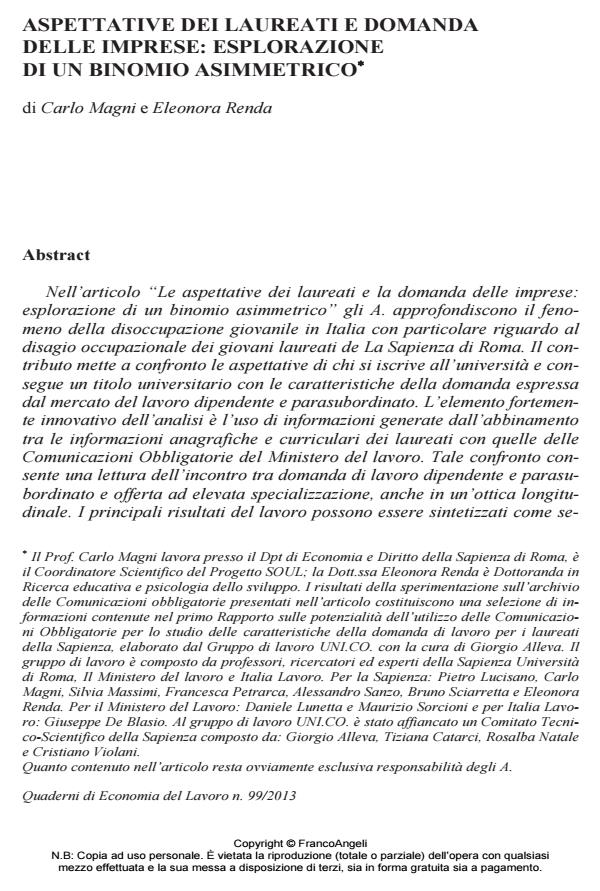Aspettative dei laureati e domanda delle imprese: esplorazione di un binomio asimmetrico
Journal title QUADERNI DI ECONOMIA DEL LAVORO
Author/s Carlo Magni, Eleonora Renda
Publishing Year 2013 Issue 2013/99
Language Italian Pages 30 P. 73-102 File size 684 KB
DOI 10.3280/QUA2013-099005
DOI is like a bar code for intellectual property: to have more infomation
click here
Below, you can see the article first page
If you want to buy this article in PDF format, you can do it, following the instructions to buy download credits

FrancoAngeli is member of Publishers International Linking Association, Inc (PILA), a not-for-profit association which run the CrossRef service enabling links to and from online scholarly content.
In the article "The expectations of graduates and the demand of enterprises: Exploring an asymmetric combination" (Le aspettative dei laureati e la domanda delle imprese: esplorazione di un binomio asimmetrico) the authors deepen the phenomenon of young unemployment in Italy with particular emphasis on employment disadvantage of young graduates of La Sapienza University of Rome. The contribution compares the expectations of those who enroll at university and obtain a university degree, with the characteristics of employees and parasubordinate labour market demand. The highly innovative element of the analysis is the use of information generated from the combination between personal information and curricula of the graduates and the Compulsory Communications system of the Ministry of Labour. This comparison allows a reading of the match between employees and parasubordinate work demand and highly specialized supply, even over time. The main results of the work can be summarized as follows: The great potential of the integration of different databases for the study of the labour market; The expectations of many graduates are largely disregarded by the instability of the workplace, the consistency of the position held and qualifications, economic insecurity and opportunities for social advancement. The inappropriate resort to high professionalism on behalf of our production system and the underestimation of the role of R & D (research & development) as a means of international competition
Carlo Magni, Eleonora Renda, Aspettative dei laureati e domanda delle imprese: esplorazione di un binomio asimmetrico in "QUADERNI DI ECONOMIA DEL LAVORO" 99/2013, pp 73-102, DOI: 10.3280/QUA2013-099005